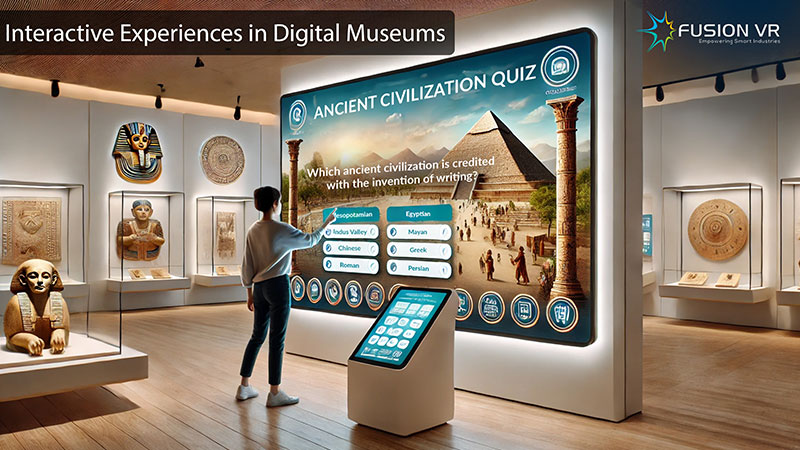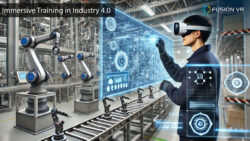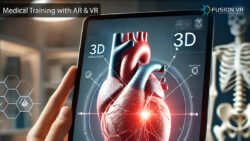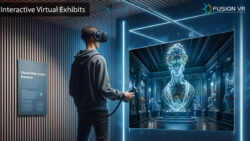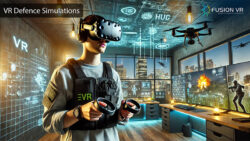Digital museums are changing the way we interact with history, art, and culture by using current VR and AR technologies. Such innovations convert static displays into dynamic, interactive attractions that capture the imagination of visitors and stay in their memory forever. Here are five wonderful interactive experiences taking advantage of VR and AR and other trending technologies:
1.Immersive 3D Simulation Theaters
One of the most exhilarating experiences in digital museums play out through stereoscopic 3D simulation theaters, housed in themed setups mimicking train carriages, buses, flights, or spacecraft. Here, breathtaking 3D visuals comes out of the screen are combined with environmental simulations that carry the audience deep into narratives that could be historical, cultural, or even futuristic.
For instance, visitors on a train-simulating experience can be taken on a route around a historical region showcasing some landmarks, cultural stories, and significant events. Everything is carried out on a very large, curved stereoscopic 3D screen that provides visuals that are colorful, high resolution, and gives a sensation of depth movement, almost lifelike in this simulation.
Visitors are placed on a specialized vehicle or a theater seat so they can actually feel the jerks, vibrations, and tilts, perfectly synchronized with what’s dominating the screen. Multisensory effects like air blasts to replace wind, temperature variations simulating the environment changes, and the water sprays to imitate rainfall further enhance the experiences.
Surround sound systems enhance the storytelling by bringing ambient noise and dialogues alive to an unforgettable experience: multisensory. The sound effects are so well placed that they make the museum-goer feel like he or she is part of the experience, networking with the narration while losing all sense of time and place, but enjoying the perfect balance between education and entertainment.
2.Interactive AR Selfie Booths
Digital museums often have AR selfie booths that allow visitors to engage in meaningful interaction with virtual representations of historical or cultural figures. These booths meticulously recreate famous settings, be it an office of a leader or a renowned artist’s workshop.
Visitors can pose for pictures with digitally rendered images of the figure displayed through AR technology and create memories with such keepsakes. Usually, artifacts or elements that enhance the environment might accompany these experiences, allowing for a blend of personal interaction with historical knowledge, thus making the past feel closer.
These installations promote accessibility and engagement by allowing visitors to capture moments and disseminate them instantly. Besides having fun while taking a “selfie,” they create a point in history that connects cultural icons to contemporary society and makes their legacies more effective.
3.Virtual Walkthroughs of Ancient Monuments and Sites with Virtual reality
Museum-goers might experience the virtual exploration of monuments and heritage sites of rich cultural and historical significance, say, like ancient caves or temples or historical ruins. These experiences feature animation, narrative guides, and even interactive walkthroughs allowing visitors to experience the artistry, architecture, and cultural significance of these landmarks.
While these experiences are specially crafted in Virtual Reality technologies, the visitor feels like as they have transported to an all-new world with full immersion. Museums may spark visitors’ interest in the appreciation and exploration of these densely populated spaces by portraying dynamic simulations and a precise recreation of surrounding spaces. These virtual tours facilitate physical access to heritage beyond physical boundaries while preserving its legacy for future generations.
4.Interactive Quiz Stations with Touchscreen Displays
Numbers of digital museums enhance visitor engagement with means of playful quiz stations that test knowledge while educating in an entertaining way. Visitors can take a quiz at these kiosks with large touchscreen monitors on topics such as historical leaders, ancient civilizations, or important cultural events.
The experience begins with multiple-choice questions presented on a monitor. Visitors answer each question by selecting respective answer options on the touchscreen. Correct answers are rewarded with flashy animations, sounds to the positive side, and even environmental effects, like lights flashing or a breeze blowing. Considerate corrective feedback is presented for wrong answers, along with a voice informing the user of the correct answer and its importance in history.
More, the quiz stations are set up quite often with leader boards or points system that also stimulates friendly competition among the visitors. The dynamic combination of visuals, sound, and effects creates an environment for learning history or culture that is an adventure of experiential learning.
5.Holographic Storytelling Displays
Holographic displays in digital museums represent an exciting and futuristic medium for reviving history and culture. These installations project images of 3D holograms of historical figures, artifacts, or events so that they can create a truly lifelike, sometimes interactive experience for visitors.
A holographic figure of a historical leader or culture icon would “speak” to the audience, telling stories about their life, achievements, or the era they represent. Visitors can get close to the display using gesture recognition or touch-sensitive panels asking questions or exploring different topics.
The technology can also be used to showcase artifacts, such as ancient tools or artwork, allowing visitors to view intricate details in 360 degrees. Combined with ambient lighting, sound effects, and voiceovers, holographic storytelling creates a multi-sensory experience that immerses visitors in the narrative while fostering a deeper appreciation for history and heritage.

